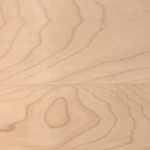Looking for furniture for your home? Then, you have to make a key decision: Choosing veneer or solid wood furniture. Veneer furniture runs the gamut from cheaply-made through well-crafted pieces covered by veneers. Also, most solid wood furniture tends to be sturdy and well built. Veneer vs Solid Wood Furniture: Head-to-Head Match-up 1 takes a look at the pros and cons of both types of furniture.

Differentiating Veneer from Solid Wood Furniture
Furniture veneer is a thin slice of hardwood bonded to another type of wood or wood substitute like particleboard. Usually, craftsmen make veneers from expensive or exotic woods. And these include walnut, rosewood or teak. Also, furniture manufacturers use veneers for all types of furniture.
By solid wood furniture, we mean furniture made of quality hardwoods. And these include oak, cherry, hickory and maple (pictured). Also, hardwoods are tough and relatively dense. So, they’re durable, malleable — and perfect for fine furniture!
Veneer vs Solid Wood Furniture: Head-to-Head Match-up
So what are the advantages and disadvantages of veneer and solid wood furniture? Let’s look at how they both stack up within several categories:
Exotic Appearance and Fancy Designs: Furniture craftsmen love to painstakingly cut, finish and arranged pieces of veneer into beautiful patterns. Like the collage of neatly arranged woods in the center of a table. But cabinetmakers also match the grain pattern of different pieces of veneer to create furniture with a more uniform grain pattern. What’s more, cabinetmakers form veneers in unusual shapes and designs. The curved contours of a grand piano are one example. Exotic appearance and fancy design winner: Veneer.
Initial Investment: Typically, veneer furniture costs less than solid wood furniture. And this makes sense. Because solid wood is more expensive than veneers and wood substitutes. Plus, solid wood pieces often involve hand craftsmanship. While workers put together most veneer furniture on an assembly line. However, factor in the long life of solid hardwood furniture. And you’ll find that solid wood furniture provides a better return on investment over time. Initial investment winner: Veneer.
Strength and Durability: The strength and durability of veneer furniture largely depend on the type of material to which the veneer is bonded. So furniture with softwood below the veneer tends to be sturdier than veneer-covered particleboard. Why? Particleboard tends to crumble when damaged. So it cannot be repaired.
But furniture builders find solid wood incredibly strong and durable. Why? Because of its relatively tough and dense characteristics. For example, solid wood drawers withstand repetitive use, year after year. In fact, with proper care, solid wood furniture should last for generations to come. Strength and durability winner: Solid wood.
View Solid Wood Furniture at Brandenberry
You can explore a vast array of solid wood furniture online at Brandenberry Amish Furniture. Or, check out Brandenberry furniture in person by visiting their ‘brick and mortar’ store in Shipshewana, Indiana.
In the blog, Veneer vs Solid Wood Furniture: Head-to-Head Match-up 2, we will look at other advantages and disadvantages of veneer versus solid wood furniture.

